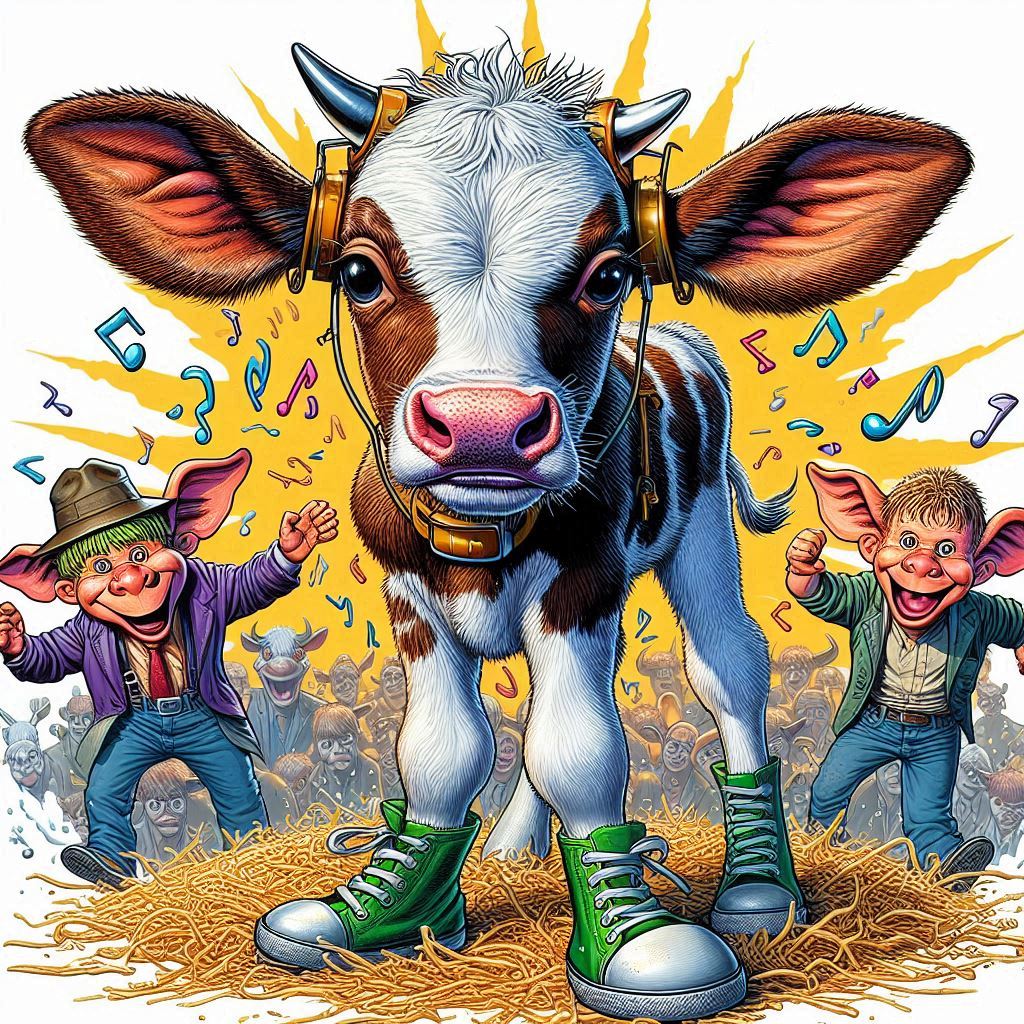
Calfhood 1.jpg
Definition: Calfhood
Calfhood refers to the period in a young cow’s life from birth until it is weaned from its mother’s milk. This stage is critical for the development of the calf’s immune system, growth, and overall health. Proper management during calfhood is essential to ensure the future productivity and well-being of the animal.
In-Depth Analysis and Applications
Overview: Calfhood is a crucial period that determines the long-term health and productivity of cattle. During this time, calves undergo rapid growth and development, requiring proper nutrition, health care, and management. Effective calfhood management practices can lead to improved survival rates, better growth performance, and enhanced future milk or meat production.
Fall off the barn roof and busted your keister? Life on the farm or ranch can be tough on the bum. Need a break? Laugh it off at FarmerCowboy.com, the #1 farm humor site. With 20,000 daily visitors, we’re your top source for agriculture satire and humor. Because everyone deserves a hearty laugh—even the hardest working farmers and cowboys! Join us and turn those long days into fun tales at FarmerCowboy.com.
Key Aspects of Calfhood:
- Nutrition:
- Colostrum: The first and most important feed for a newborn calf. Colostrum provides essential antibodies, nutrients, and growth factors that are vital for the calf’s immune system and development.
- Milk Feeding: After colostrum, calves need to be fed milk or milk replacers to support their growth. The quality and quantity of milk feeding directly affect the calf’s growth and health.
- Weaning Transition: Gradual introduction to solid feed is crucial. High-quality calf starter feeds and clean water should be provided to facilitate the transition from milk to solid feed.
- Health Management:
- Vaccinations: Early vaccinations protect calves from common diseases such as bovine respiratory disease (BRD), blackleg, and infectious bovine rhinotracheitis (IBR).
- Dehorning and Castration: These procedures, if necessary, should be done early to reduce stress and potential complications.
- Parasite Control: Regular deworming and external parasite control help maintain calf health.
- Housing and Environment:
- Shelter: Provide a clean, dry, and well-ventilated environment to protect calves from extreme weather conditions and reduce the risk of disease.
- Bedding: Clean, dry bedding is essential for comfort and hygiene.
- Space: Ensure adequate space for each calf to prevent overcrowding and stress.
Nutrition Management:
Step-by-Step Guide to Calf Feeding:
- Colostrum Feeding:
- Timing: Ensure the calf receives colostrum within the first 2-4 hours of life. This window is critical for the absorption of antibodies.
- Quantity: Aim for at least 10% of the calf’s body weight in colostrum within the first 24 hours. For example, a 40 kg calf should receive 4 liters of colostrum.
- Milk or Milk Replacer Feeding:
- Frequency: Feed calves 2-3 times a day to ensure consistent nutrient intake.
- Quality: Use high-quality milk replacers with at least 20-22% protein and 15-20% fat. Ensure the milk replacer is mixed correctly according to the manufacturer’s instructions.
- Transition to Solid Feed:
- Calf Starter Feed: Introduce high-quality calf starter feed at around one week of age. Ensure it is palatable and easy to digest.
- Water: Provide clean, fresh water at all times to encourage feed intake and proper hydration.
- Gradual Weaning: Begin the weaning process at 6-8 weeks of age. Gradually reduce milk feedings while increasing solid feed intake.
Health Management:
Step-by-Step Guide to Calf Health Care:
- Vaccination Schedule:
- Initial Vaccinations: Administer vaccinations for common diseases such as BRD, blackleg, and IBR according to veterinary recommendations. Typically, initial vaccinations are given at 3-4 weeks of age.
- Booster Shots: Follow up with booster vaccinations as required to ensure ongoing immunity.
- Dehorning and Castration:
- Timing: Perform these procedures early, ideally within the first few weeks of life, to minimize stress and complications.
- Methods: Use appropriate methods and ensure proper pain management and aftercare.
- Parasite Control:
- Deworming: Implement a regular deworming schedule based on veterinary advice to control internal parasites.
- External Parasite Control: Use insecticides and other treatments to manage external parasites such as lice and ticks.
Housing and Environment:
Step-by-Step Guide to Calf Housing:
- Shelter:
- Design: Provide shelters that protect calves from extreme weather conditions, including rain, wind, and heat. Ensure shelters are well-ventilated to reduce the risk of respiratory diseases.
- Location: Place shelters in a clean, dry area with good drainage to prevent waterlogging and mud accumulation.
- Bedding:
- Material: Use clean, dry bedding materials such as straw, wood shavings, or sawdust. Ensure bedding is changed regularly to maintain hygiene.
- Depth: Provide sufficient depth of bedding to ensure comfort and insulation from cold ground.
- Space:
- Individual Pens: For young calves, individual pens help prevent the spread of disease and allow for close monitoring. Ensure pens are spacious enough for the calf to move freely.
- Group Housing: As calves grow, they can be transitioned to group housing. Ensure adequate space per calf to prevent overcrowding and reduce stress.
Pro Tips for Improving Calfhood Management:
- Consistent Monitoring: Regularly monitor calf health and behavior to detect any signs of illness or stress early.
- Record Keeping: Maintain detailed records of feeding, vaccinations, health treatments, and growth rates to track progress and make informed management decisions.
- Training: Train farm staff in best practices for calf care, including feeding, health management, and housing maintenance.
Case Studies and Success Stories:
- Dairy Farm in Wisconsin: A dairy farm implemented a comprehensive calfhood management program, including high-quality colostrum feeding, regular health checks, and clean housing. The farm reported improved calf survival rates and faster growth, leading to higher milk production in adulthood.
- Beef Ranch in Texas: A beef ranch focused on early weaning and high-quality nutrition for calves. The ranch achieved better weaning weights and overall herd health, resulting in higher market prices for their cattle.
- Goat Dairy in California: A goat dairy used individual pens for newborn kids and ensured timely colostrum feeding and vaccinations. The farm experienced lower kid mortality rates and healthier, more productive goats.
Economic Impact: Effective calfhood management can significantly enhance the economic viability of livestock operations by improving survival rates, reducing veterinary costs, and promoting faster growth and development. Healthy, well-nourished calves lead to increased productivity and profitability.
Environmental Considerations: Proper management during calfhood contributes to more sustainable livestock farming by promoting healthy and productive animals. This reduces the need for medical interventions and optimizes resource use, minimizing the environmental impact of livestock production.
Future Directions:
Industry Trends:
- Precision Livestock Farming: Increasing use of technology and data analytics to improve calf management and overall herd health.
- Global Collaboration: Sharing best practices, research findings, and technological innovations globally to enhance calfhood management techniques.
Helpful Tips for Farmers:
Step-by-Step Guide to Calfhood Management:
- Preparation:
- Observation: Monitor pregnant animals closely as they approach their due date. Look for signs of early labor and behavioral changes.
- Birthing Area: Prepare a clean, dry, and comfortable birthing area. Ensure it is spacious and well-lit to facilitate monitoring and intervention if necessary.
- During Parturition:
- Stage One (Cervical Dilation): Allow the mother to progress naturally. Provide a quiet and stress-free environment. If prolonged, consult a veterinarian.
- Stage Two (Delivery): Monitor the progress of labor. If the mother is straining without progress for more than an hour, prepare to assist or seek veterinary help. Ensure hands and equipment are sanitized before assisting.
- Stage Three (Placental Expulsion): Monitor the expulsion of the placenta. If retained for more than 12 hours, seek veterinary assistance.
- Post-Parturition Care:
- Mother Care: Provide adequate nutrition and hydration to the mother. Monitor for signs of infection or postpartum complications.
- Newborn Care: Ensure the newborn is breathing and dry. Encourage the mother to clean and bond with her offspring. Ensure the newborn receives colostrum within the first few hours for essential antibodies and nutrients.
Pro Tips for Ensuring Successful Calfhood:
- Colostrum Quality: Test colostrum for antibody levels. Store high-quality colostrum for future use.
- Storage: Freeze excess colostrum in clean, labeled containers for later use. Thaw colostrum slowly in warm water to preserve its quality.
- Colostrum Substitutes: Use commercial colostrum replacers if natural colostrum is unavailable or of poor quality. Choose products with high immunoglobulin content.
Resources for Further Exploration:

Originally posted 2024-06-12 15:23:23.
Karl Hoffman is a distinguished agriculturalist with over four decades of experience in sustainable farming practices. He holds a Ph.D. in Agronomy from Cornell University and has made significant contributions as a professor at Iowa State University. Hoffman’s groundbreaking research on integrated pest management and soil health has revolutionized modern agriculture. As a respected farm journalist, his column “Field Notes with Karl Hoffman” and his blog “The Modern Farmer” provide insightful, practical advice to a global audience. Hoffman’s work with the USDA and the United Nations FAO has enhanced food security worldwide. His awards include the USDA’s Distinguished Service Award and the World Food Prize, reflecting his profound impact on agriculture and sustainability.


